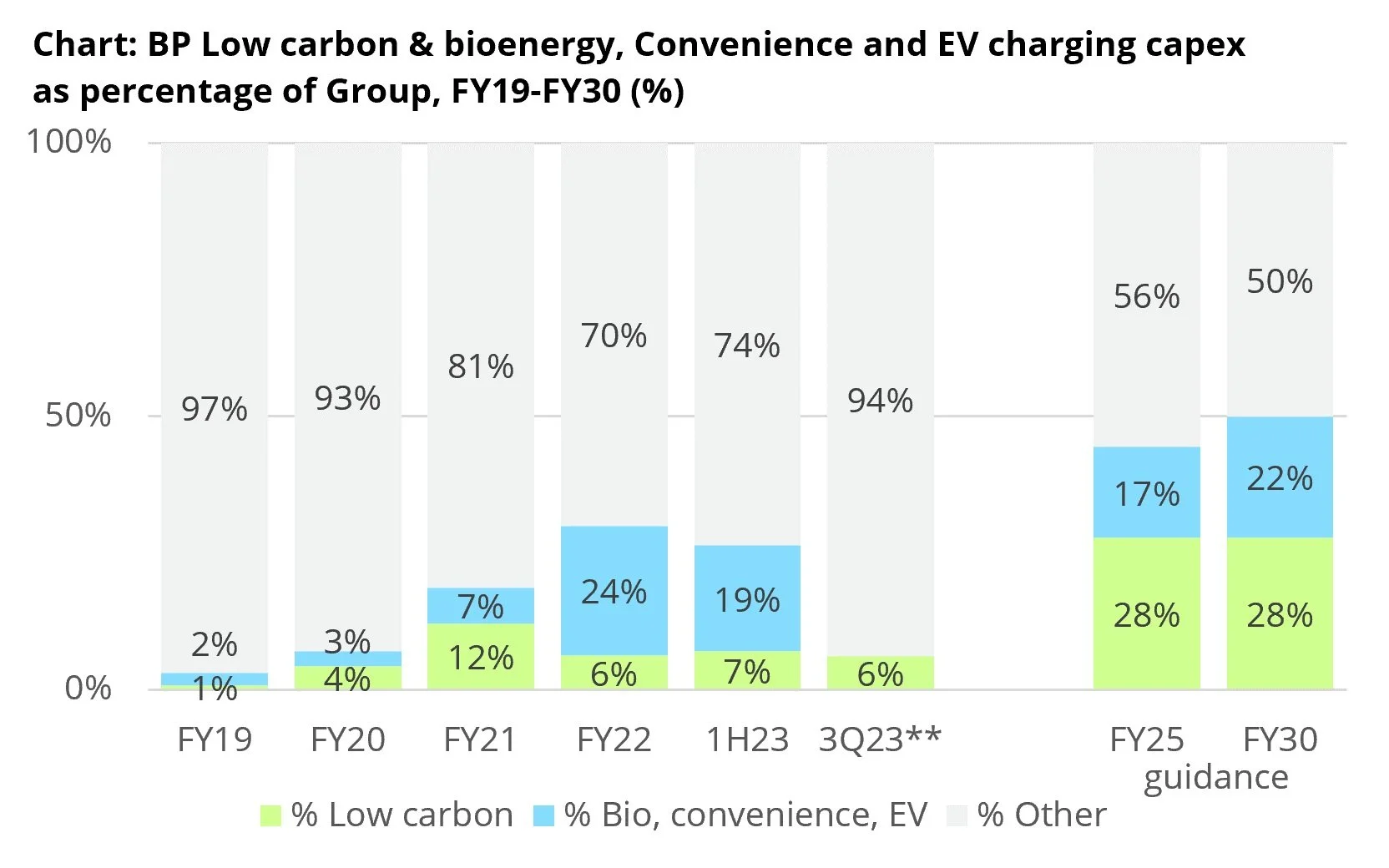BP’s transition strategy in new hands: Murray Auchincloss named CEO
BP has appointed Murray Auchincloss as its new CEO, finalising the company's leadership search after Bernard Looney’s departure last September. Auchincloss, who stepped in as interim CEO in September 2023, has a background in upstream, having served as CFO for the segment before his elevation to group CFO in 2020.
In our previous analysis, BP's next transition, we delved into the implications of Looney's resignation for BP’s transition strategy. With Auchincloss' appointment as CEO, we have further explored what this means for BP’s strategy moving forward.
-
01
Auchincloss is said to have worked closely with Looney in developing BP’s strategy including its decision last February to increase investment in oil and gas and low carbon, resulting in an upward revision to BP’s oil and gas production (from a 40% decline to 25% decline by FY30 (based on FY19 levels).
02
During his tenure as interim CEO, Auchincloss confirmed the company’s commitment to maintaining its strategy, meeting its targets, and upon his permanent appointment asserted the company will focus on “executing with discipline, and always focusing on returns”.
-
01
Auchincloss has demonstrated a commitment to building renewables that support BP’s low carbon strategy, overseeing the acquisition of the remaining 50.03% share in Lightsource BP. Lightsource BP has a renewable pipeline of 61GW (8.4GW developed to date), and BP stated it will look to scale up Lightsource and apply its capabilities to help secure low carbon power for its renewables, biofuels, hydrogen and EV charging targets.
02
In spite of this, Auchincloss's interim leadership coincided with BP’s October 2023 Investor update, highlighting its sizable reserves available to drive high levels of oil and gas production post-2040 into 2050. This appears to be an attempt to appease traditional oil and gas shareholders. The upcoming AGM may hint at how committed Auchincloss is to the current strategy, where maximum ambition will be necessary for decarbonisation, not a midway approach.
-
01
BP’s low carbon strategies over the last 15+ years have experienced many iterations, with long-term execution a challenge.
Despite an internal appointment, leadership changes often bring new perspectives and rebasing, usually of financials. Although Auchincloss has indicated a continuity in strategy, his tenure as interim CEO shows potential signs of a more hedged approach. FY23 saw BP prioritising distributions at the expense of investment. In its 3Q23 earnings call in October, the company reiterated that $4bn in buybacks at $60/bbl will depend on being at the lower end of the FY24-30 $14-18bn capex range.
02
An important decision for Auchincloss moving forward will be maintaining BP’s commitment to peer-leading low carbon capital expenditure. This will need to materially ramp up over the next two years under Auchincloss’ leadership to meet commitments. BP is targeting up to ~44% ($8bn) investment in TGEs by FY25, of which ~28% ($5bn) in Low carbon. This compares to historical investment as of 3Q23, peaking at ~30% in FY22.
03
At the time of Looney’s departure, BP was criticised for share price underperformance, but its strategy had delivered total shareholder returns of 18% over the 12 months exceeding Shell at 13%. The company has since slumped to -3.6% over 12 months, trailing Shell at 3%. We will wait to see if the new certainty surrounding leadership improves investor sentiment.
It’s yet to be determined how Auchincloss’ leadership decisions might subtly shift BP's long-term goals. Any material strategic shifts or announcements from Auchincloss are likely to come later in the year, due to the imminence of the company’s AGM.
Source: Company data, Accela Research estimates | *Bio, convenience, EV charging estimated as difference between TGEs and Low carbon capex, **TGEs disclosed half-yearly
Read more of our BP analysis: Top engagement topics for the European Majors in 2024


